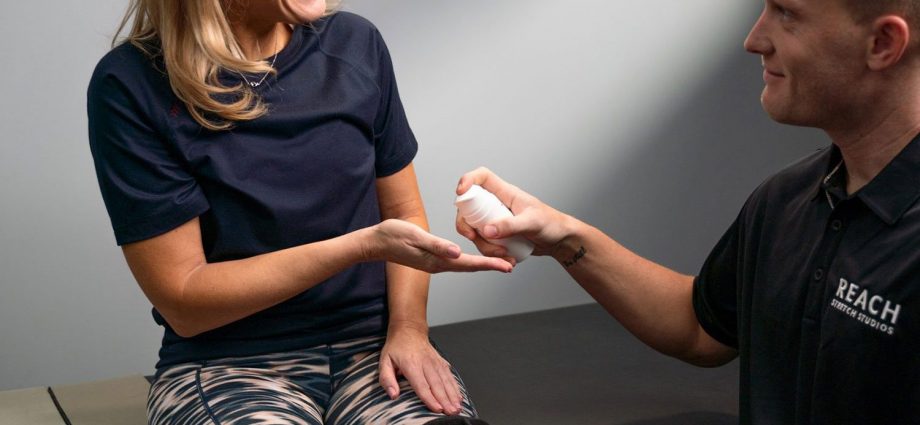Stretch therapy is a form of physical therapy that has been around for years and helps to break up scar tissue. It helps the body move better and heal quickly after an injury, surgery, or even just poor flexibility.
How it works:
For example, if you were to sprain your ankle then stretch therapy could be used immediately afterward – if done correctly – so as not to swell any more than necessary and give you the best opportunity to keep a range of motion in the ankle during recovery.
It’s also commonly done on patients after they come out of surgery where their movement might have been limited due to things like tendon repair or hip replacement surgery.
In those situations, too much scar tissue can build up which makes future movement difficult and can cause pain from the build-up of scar tissue.
Stretching helps to break that down which can improve future flexibility, range of motion and recovery time.
This is not unique to stretch therapy as physical therapy has been around for years and will be needed by nearly everyone at some point in their life. The difference between physical therapy used after an injury or surgery versus stretch therapy is that stretch therapy involves passively or actively stretching a muscle group which increases blood flow to the area being treated, relaxes contracted muscles and breaks up scar tissue which allows people to move more freely then they were capable of prior to their injury or surgery. It also decreases pain related to excess scar tissue. This also helps improve range of motion which is a common problem for those who have had a surgery that limits their ability to move. The opposite can also be true, as regular stretch therapy has been proven to increase strength and flexibility over time – provided you’re doing it correctly.
Effects: So how are these benefits derived? Well, there are several: For example, if you were to sprain your ankle then stretch therapy could be used to help reduce the pain and increase your range of motion. This would also be true if you were recovering from surgery, especially in the ankle or elbow which are common areas for sports injuries (such as Tommy John surgery).
Prevention: The same can be said for preventing injuries. For example, if you play basketball then stretching before and after would go a long way toward preventing an injury like plantar fasciitis which could sideline you for months at a time. Additionally, stretching out your muscles before running or playing any sport will protect you against muscle pulls that could end your season or worse, cause you to retire.
Benefits: The benefits of stretch therapy are numerous but some of the most important include increased flexibility, range of motion, and recovery time. This is especially true for people who have had surgeries or injuries that limited their ability to move without pain. Once your flexibility begins returning you will notice how much better you feel in addition to increasing your quality of life in terms of making everything easier from doing the dishes to playing sports.
Injury Recovery: One study showed that stretch therapy helped reduce pain from ankle sprains by 34% and increased range of motion in a healthy group at a 24% improvement after only four weeks. This has been shown in other studies to help with recovery time as well which is why it’s used in physical therapy for patients who have had surgeries or injuries that limited their mobility.
Recovery: Another study involving stretching found participants saw an average of 2-3 inches in terms of increased height when they stretched regularly over a six-month period versus participants who did not stretch at all over the same period. This makes sense because when you’re not flexible then your muscles are shorter and putting them through the same movements as an inflexible person could lead to injury. This is especially true for any type of sports where your body is contorted into awkward positions, such as gymnastics or basketball which are common sports that can cause injuries due to lack of flexibility.
Stretch Routine: The best way to do stretch therapy is before and after any physical activity or if you have problems with specific joints then just do them regularly throughout the day. For example, stretching out your hands will help get rid of “computer hands” from being on a computer all day. Additionally, it doesn’t have to be complicated – even simple yoga poses will get your joints loose so they don’t get injured by being in one position too long. In terms of increasing height, the best thing you can do is stretch when your muscles are warm so it’s best to stretch after a workout or even better, before bed.
There is no way of knowing if you will ever need to use the benefits of stretch therapy unless you’ve had an injury that has limited your mobility and even then, it can help prevent problems altogether. This means that stretching regularly like you would put on sunscreen or wear a seatbelt should be part of everyone’s daily routine because once you start feeling pain from lack of flexibility then it may already be too late.

